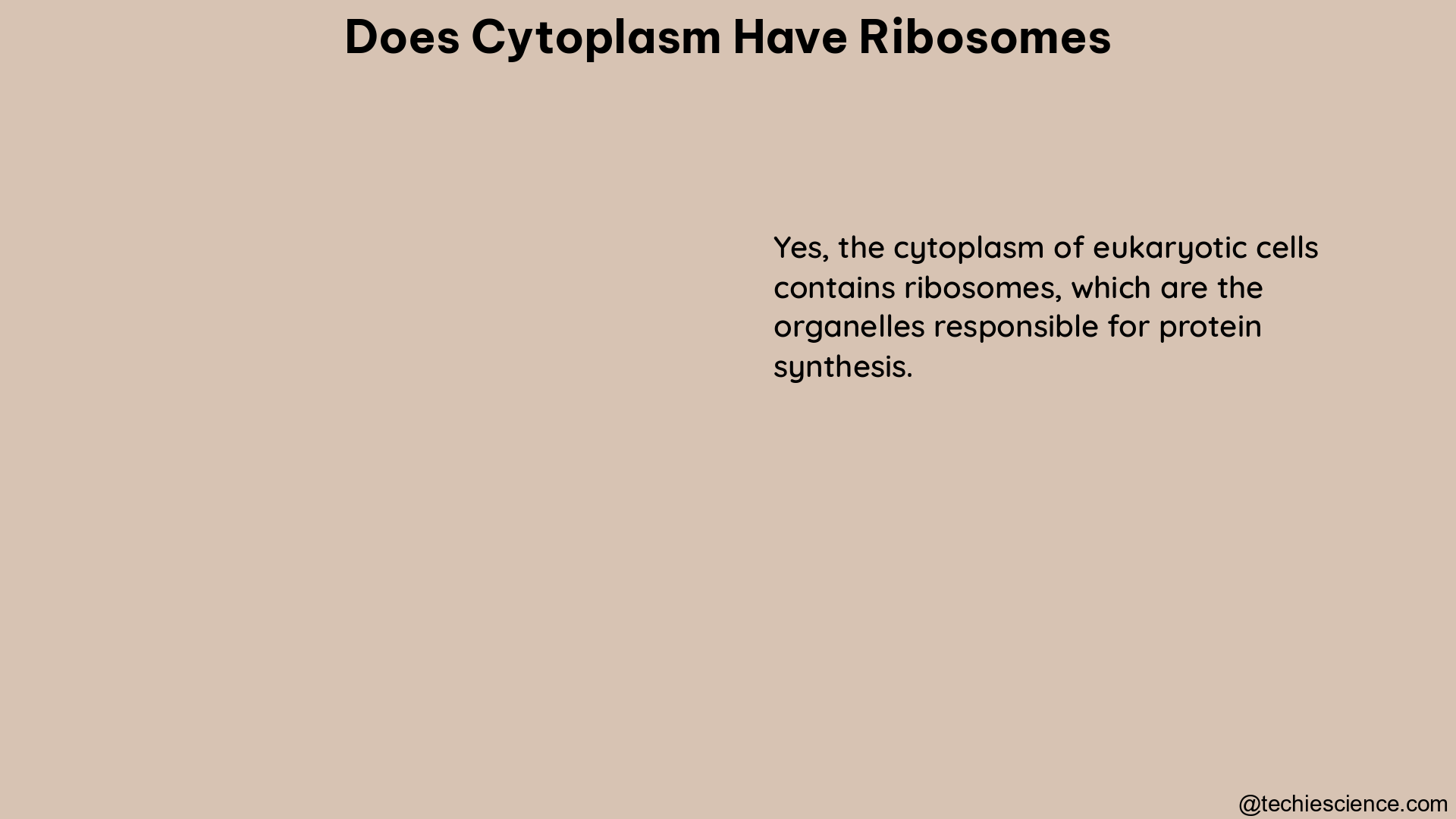The cytoplasm, the gel-like substance that fills the interior of a cell, is a bustling hub of activity, teeming with a variety of organelles and molecules that work together to sustain life. One of the most crucial components found within the cytoplasm are the ribosomes, which play a vital role in the synthesis of proteins, the building blocks of life.
What are Ribosomes?
Ribosomes are complex, microscopic structures composed of specialized ribosomal RNA (rRNA) and proteins. They serve as the cellular factories where protein synthesis takes place, translating the genetic code stored in messenger RNA (mRNA) into functional proteins. Ribosomes are found in both prokaryotic (bacteria and archaea) and eukaryotic (plant and animal) cells, and their structure and function are highly conserved across different organisms.
Ribosomes in the Cytoplasm

The cytoplasm of a cell is the primary location where ribosomes reside, either freely floating or attached to the endoplasmic reticulum (ER) membrane. The number of ribosomes present in a cell can vary significantly, depending on the cell type, its size, and its metabolic activity.
Freely Floating Ribosomes
In the cytoplasm, ribosomes can be found freely floating, unattached to any membrane structures. These free-floating ribosomes are responsible for the synthesis of proteins that are destined to remain in the cytoplasm or to be exported from the cell. They are particularly abundant in cells that are actively engaged in protein production, such as those involved in growth, repair, or the production of secreted proteins.
Membrane-Bound Ribosomes
Ribosomes can also be found attached to the outer membrane of the endoplasmic reticulum (ER), forming structures known as membrane-bound or rough ribosomes. These ribosomes are responsible for the synthesis of proteins that are destined for the ER, the Golgi apparatus, or for secretion from the cell. The ER provides a specialized environment for the folding and modification of these newly synthesized proteins.
Polyribosomes
In some cases, ribosomes can be found clustered together in structures called polyribosomes or polysomes. These are groups of multiple ribosomes that are simultaneously translating the same mRNA molecule, allowing for the rapid and efficient production of multiple copies of a particular protein.
Ribosome Abundance and Cellular Activity
The number of ribosomes present in a cell can vary widely, depending on the cell’s metabolic activity and growth rate.
Rapidly Dividing Cells
In rapidly dividing cells, such as those found in cancer or embryonic tissues, the demand for protein synthesis is extremely high. In these cells, ribosomes can account for a significant fraction of the cell’s overall RNA pool, sometimes making up as much as 30-50% of the total cellular RNA. The high ribosome content allows these cells to rapidly produce the proteins necessary for cell division and growth.
Slow-Growing Cells
In contrast, slow-growing or non-dividing cells, such as those found in mature tissues, tend to have a lower ribosome content. These cells may only have a few thousand ribosomes per cell, as their protein synthesis demands are not as high as rapidly dividing cells.
Specialized Ribosomes
In addition to the variation in ribosome abundance, cells can also produce specialized ribosomes that differ in their composition and function. These specialized ribosomes can play a role in the selective translation of specific mRNA molecules, allowing the cell to fine-tune its protein production in response to various environmental or developmental cues.
Ribosomes and Protein Synthesis
The primary function of ribosomes is to facilitate the synthesis of proteins, which are essential for the structure, function, and regulation of a cell’s activities. The process of protein synthesis, also known as translation, involves the following steps:
- mRNA Binding: The ribosome binds to the mRNA molecule, which carries the genetic code for the protein to be synthesized.
- Amino Acid Recruitment: Transfer RNA (tRNA) molecules, each carrying a specific amino acid, are recruited to the ribosome and aligned with the corresponding codon on the mRNA.
- Peptide Bond Formation: The ribosome catalyzes the formation of a peptide bond between the amino acids, linking them together to form a polypeptide chain.
- Polypeptide Elongation: The ribosome continues to move along the mRNA, adding amino acids one by one, until the complete polypeptide chain is synthesized.
- Protein Folding and Modification: The newly synthesized polypeptide chain may undergo further folding and post-translational modifications, such as the addition of chemical groups or the removal of signal sequences, to become a functional protein.
Conclusion
In summary, the cytoplasm of a cell is indeed home to a significant population of ribosomes, which are essential for the synthesis of proteins, the fundamental building blocks of life. The number and distribution of ribosomes within the cytoplasm can vary greatly depending on the cell type, its metabolic activity, and its growth rate, reflecting the dynamic and adaptable nature of cellular protein production.
References:
- Ribosome – Definition, Structure, and Function
- How Many Ribosomes Are in a Cell?
- Ribosomes, Transcription, and Translation
- Ribosome
- The Composition and Functions of the Eukaryotic Ribosome
- Specialized Ribosomes: A New Frontier in Gene Regulation and Organismal Biology

Hi, I am Milanckona Das and pursuing my M. Tech in Biotechnology from Heritage Institute of Technology. I have a unique passion for the research field. I am working in Lambdageeks as a subject matter expert in biotechnology.
LinkedIn profile link-